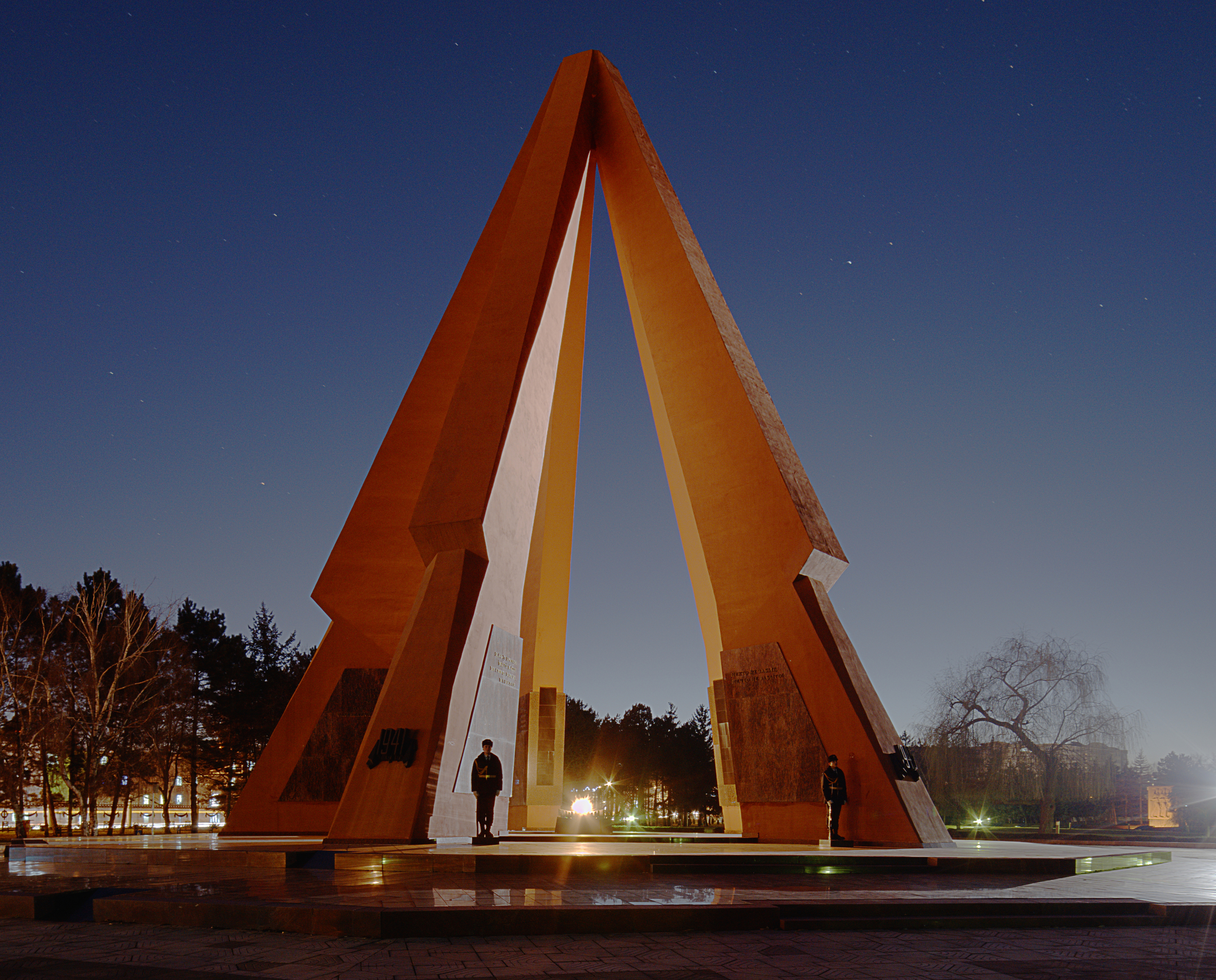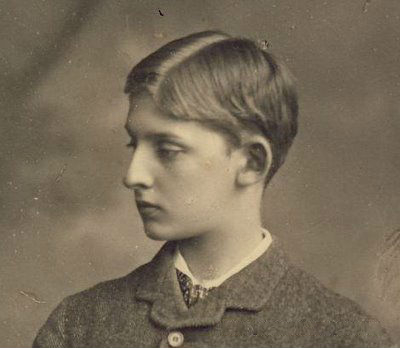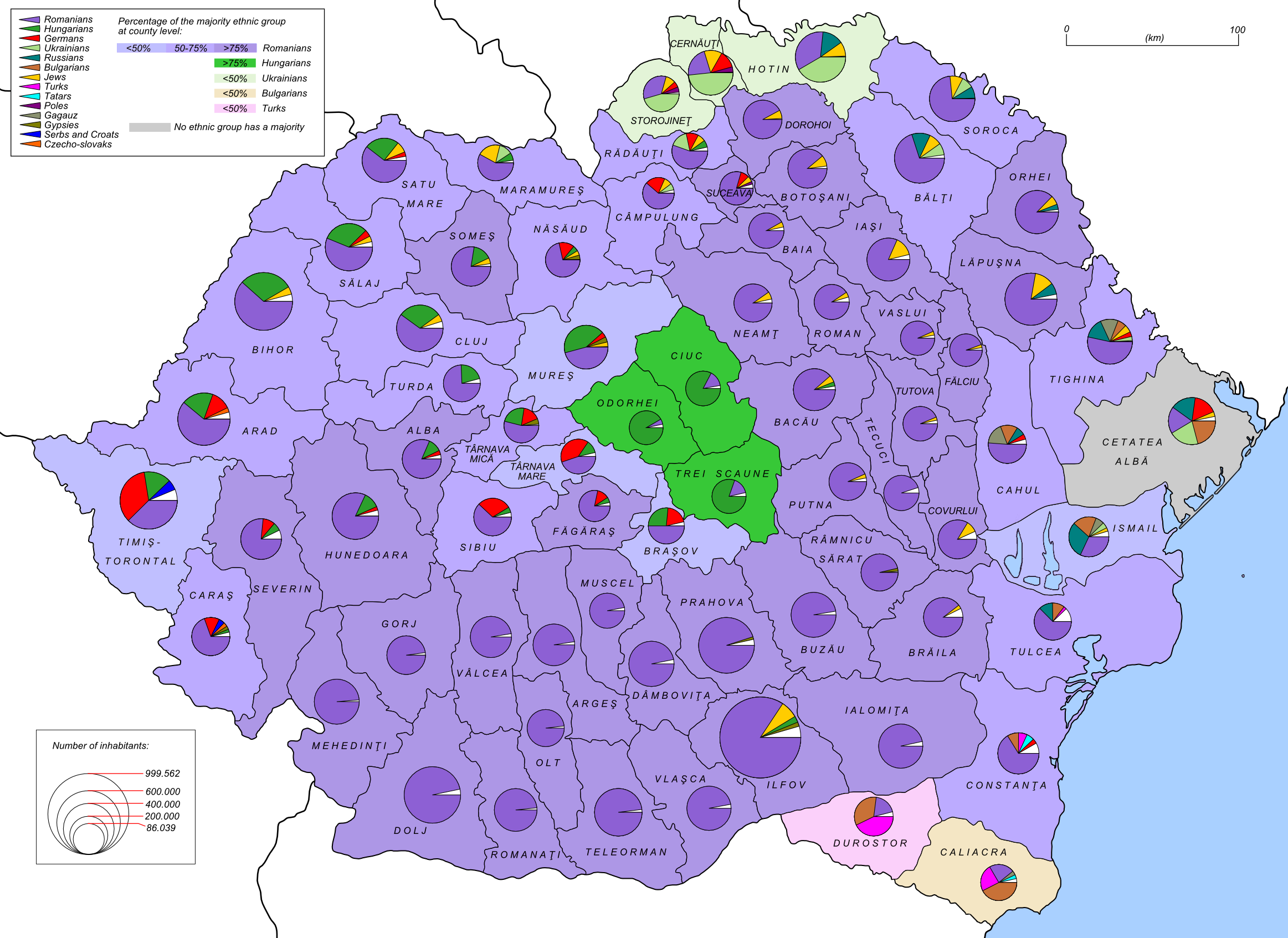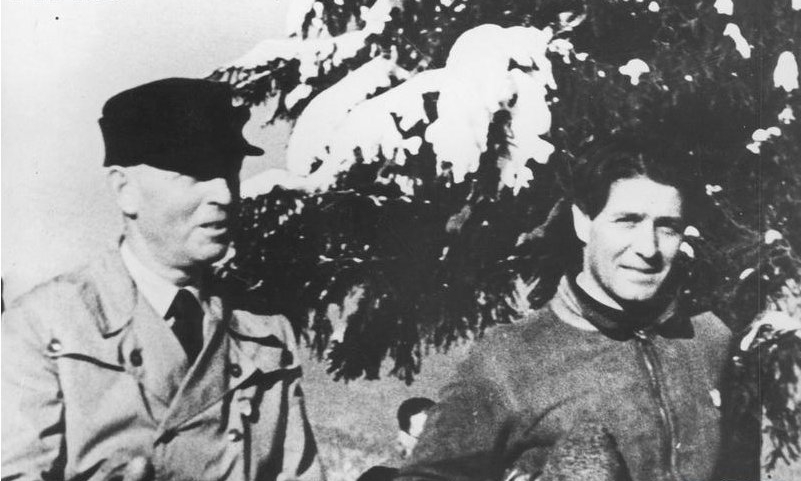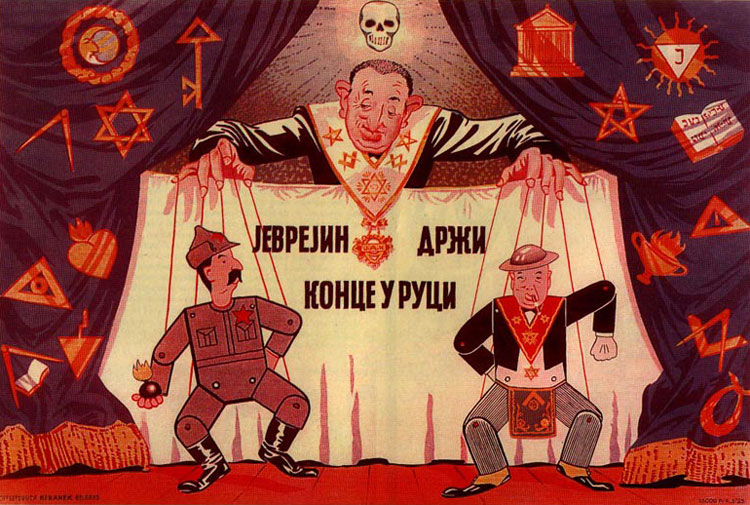|
Oscar Han
Oscar Han (3 December 1891 – 14 February 1976) was a Romanian sculptor and writer. Biography Han was born in Bucharest on 3 December 1891 to a father of German origin and a mother from Vrancea. From 1909 to 1914, he studied sculpture and drawing at the Academy of Arts in Bucharest (now the National University of Arts) under Dimitrie Paciurea and Frederick Storck. He made his debut in 1911 with the sculpture "Bust of a Girl". Later, Han would return to his alma mater as a professor of sculpture, a post he occupied from 1927 to 1944, and again in 1956. During the First World War, Han was one of several artists commissioned to create works commemorating Romania's armed forces. In the interwar period, he formed the ''Group of Four'' ("Grupul celor patru") artists' collective together with painters Nicolae Tonitza, Francisc Șirato and Ștefan Dimitrescu. Not defined by a strict artistic philosophy, the Group of Four was bound mainly by friendship and collaboration. Han w ... [...More Info...] [...Related Items...] OR: [Wikipedia] [Google] [Baidu] |
Emanoil Bucuța
Emanoil Bucuța (born Emanoil Popescu; 27 June 1887 – 7 October 1946) was a Romanian prose writer, poet, cultural official, and Corresponding Member of the Romanian Academy. Early life and education Bucuța was born in Bolintin-Deal, Giurgiu County to Ioniță Popescu, a butler, and his wife Rebeca-Elena (''née'' Bucuța). After moving to Bucharest, he graduated from Saint Sava High School in 1907, followed by a degree in German Studies from the University of Bucharest in 1911. He began his doctoral studies at the University of Berlin in 1912, but was forced to drop out after 1913 due to lack of funds. As a writer Bucuța made his prose publishing debut in 1903, in ''Universul ilustrat'' (a supplement to Universul newspaper). His first published volume was a book of poetry, ''Florile inimii'' ("Flowers of the Heart", 1920). Literary critic George Călinescu remarked: " ucuțais the first ''intimist'' in the proper sense of the word, a poet who sings of his small domes ... [...More Info...] [...Related Items...] OR: [Wikipedia] [Google] [Baidu] |
Gândirea
''Gândirea'' ("The Thinking"), known during its early years as ''Gândirea Literară - Artistică - Socială'' ("The Literary - Artistic - Social Thinking"), was a Romanian literary, political and art magazine. Overview Founded by Cezar Petrescu and D. I. Cucu in the city of Cluj, and first issued on May 1, 1921, as a literary supplement for the Cluj-based '' Voința'', it was originally a modernist and expressionist-influenced journal. During its early existence, it attracted criticism from the traditional cultural establishment for allegedly allowing influences from Germanic Europe to permeate Romanian culture. ''Gândirea'' moved to Bucharest in October 1922, and, in 1926, its leadership was joined by the nationalist thinker Nichifor Crainic; he became its director and ideological guide in 1928, gradually moving it toward a mystical Orthodox focus — itself occasionally referred to as ''Gândirism''. With just two interruptions in publication (1925 and 1933� ... [...More Info...] [...Related Items...] OR: [Wikipedia] [Google] [Baidu] |
King Michael I Park
King Michael I Park (), formerly Herăstrău Park (), is a large park on the northern side of Bucharest, Romania, around Lake Herăstrău, one of the lakes formed by the Colentina River. Geography The park has an area of about 187 ha, of which 74 ha is the lake. Initially, the area was full of marshes, but these were drained between 1930 and 1935, and the park was opened in 1936. The park is divided into two zones: a rustic or natural zone (the Village Museum), which is left more or less undisturbed, and a public/'active' domain with open areas for recreation activities. Small boats are allowed on the lake. Name The park was initially intended to be called National Park (''Parcul Național''), but it was renamed ''Parcul Carol II'' during the period of the Carol II of Romania's cult of personality. Following World War II, it was renamed ''Parcul I. V. Stalin'', featuring a statue of Stalin at its entrance. In 1956, during the de-Stalinization period, Stalin's statue was tor ... [...More Info...] [...Related Items...] OR: [Wikipedia] [Google] [Baidu] |
Moldova
Moldova, officially the Republic of Moldova, is a Landlocked country, landlocked country in Eastern Europe, with an area of and population of 2.42 million. Moldova is bordered by Romania to the west and Ukraine to the north, east, and south. The List of states with limited recognition, unrecognised breakaway state of Transnistria lies across the Dniester river on the country's eastern border with Ukraine. Moldova is a Unitary state, unitary Parliamentary system, parliamentary Representative democracy, representative democratic republic with its capital in Chișinău, the country's largest city and main cultural and commercial centre. Most of Moldovan territory was a part of the Principality of Moldavia from the 14th century until 1812, when it was Treaty of Bucharest (1812), ceded to the Russian Empire by the Ottoman Empire (to which Moldavia was a Vassal and tributary states of the Ottoman Empire, vassal state) and became known as Bessarabia. In 1856, southern Bessarabia was ... [...More Info...] [...Related Items...] OR: [Wikipedia] [Google] [Baidu] |
Chișinău
Chișinău ( , , ; formerly known as Kishinev) is the Capital city, capital and List of cities and towns in Moldova, largest city of Moldova. The city is Moldova's main industrial and commercial centre, and is located in the middle of the country, on the river Bîc, a tributary of the Dniester. According to the results of the 2014 Moldovan census, 2014 census, the city proper had a population of 532,513, while the population of the Municipality of Chișinău (which includes the city itself and other nearby communities) was 700,000. Chișinău is the most economically prosperous locality in Moldova and its largest transportation hub. Nearly a third of Moldova's population lives in the metro area. Moldova has a Moldovan wine, history of winemaking dating back to at least 3,000 BCE. As the capital city, Chișinău hosts the yearly national wine festival every October. Though the city's buildings were badly damaged during the World War II, Second World War and earthquakes, a rich a ... [...More Info...] [...Related Items...] OR: [Wikipedia] [Google] [Baidu] |
Ferdinand I Of Romania
Ferdinand I (Ferdinand Viktor Albert Meinrad; 24 August 1865 – 20 July 1927), nicknamed ''Întregitorul'' ("the Unifier"), was King of Romania from 10 October 1914 until his death in 1927. Ferdinand was the second son of Leopold, Prince of Hohenzollern, and Infanta Antónia of Portugal, (daughter of Queen Maria II of Portugal and of Ferdinand II of Portugal, Prince Ferdinand of Saxe-Coburg and Gotha-Kohary). His Hohenzollern-Sigmaringen, family was part of the Catholic branch of the Prussian royal family Hohenzollern. In 1886, Ferdinand became heir presumptive to the Romanian throne, following the renunciation of his father (in 1880) and William, Prince of Hohenzollern, older brother. From the moment he settled in Romania, he continued his military career, gaining a series of honorary commands and being promoted to the rank of corps general. He married in 1893 Marie of Romania, Princess Marie of Edinburgh, granddaughter of both Queen Victoria and Alexander II of Russia, Emperor ... [...More Info...] [...Related Items...] OR: [Wikipedia] [Google] [Baidu] |
Nae Ionescu
Nae Ionescu (, born Nicolae C. Ionescu; – 15 March 1940) was a Romanian philosopher, logician, mathematician, professor, and journalist. Life Born in Brăila, Ionescu studied Letters at the University of Bucharest until 1912. Upon graduation, he was appointed teacher at the Matei Basarab National College, Matei Basarab High School in Bucharest. When World War I began, he traveled to German Empire, Germany for additional studies at the University of Göttingen. Romania's entry into the war on the Allies of World War I, Entente side prevented him from returning, but he was awarded a doctorate in philosophy in 1919 from the Ludwig Maximilian University of Munich, University of Munich. His thesis was entitled ''Die Logistik als Versuch einer neuen Begründung der Mathematik'' ("Formal logic as an attempt at a new foundation of mathematics"). Back in Romania, after another brief stint teaching, Ionescu was appointed assistant to Constantin Rădulescu-Motru at the University of B ... [...More Info...] [...Related Items...] OR: [Wikipedia] [Google] [Baidu] |
Romania In World War II
The Kingdom of Romania, under the rule of King Carol II, initially maintained neutrality in World War II. However, fascist political forces, especially the Iron Guard, rose in popularity and power, urging an alliance with Nazi Germany and its allies. As the military fortunes of Romania's two main guarantors of territorial integrity—France and Britain—crumbled in the Battle of France, the government of Romania turned to Germany in hopes of a similar guarantee, unaware that Germany, in the supplementary protocol to the 1939 Molotov–Ribbentrop Pact, had already granted its blessing to Soviet claims on Romanian territory. In the summer of 1940, the USSR occupied Bessarabia and Northern Bukovina, severely weakening Romania and diminishing its international standing. Taking advantage of the situation, Hungary and Bulgaria both pressed territorial claims on Romania. The disputes, arbitrated by Germany and Italy, led to the further losses of Northern Transylvania and Southern ... [...More Info...] [...Related Items...] OR: [Wikipedia] [Google] [Baidu] |
Ion Antonescu
Ion Antonescu (; ; – 1 June 1946) was a Romanian military officer and Mareșal (Romania), marshal who presided over two successive Romania during World War II, wartime dictatorships as Prime Minister of Romania, Prime Minister and ''Conducător'' during most of World War II. Having been responsible for facilitating the Holocaust in Romania, he was overthrown in 1944, before being tried for war crimes and executed two years later in 1946. A Romanian Army career officer who made his name during the 1907 Romanian peasants' revolt, 1907 peasants' revolt and the Romania in World War I, World War I Romanian campaign, the antisemitic Antonescu sympathized with Far-right politics, far-right and Fascism, fascist politics. He was a military attaché to France and later Chief of the Romanian General Staff, Chief of the General Staff, briefly serving as Ministry of National Defense (Romania), Defence Minister in the National Christian cabinet of Octavian Goga as well as the subsequent F ... [...More Info...] [...Related Items...] OR: [Wikipedia] [Google] [Baidu] |
Iron Guard
The Iron Guard () was a Romanian militant revolutionary nationalism, revolutionary Clerical fascism, religious fascist Political movement, movement and political party founded in 1927 by Corneliu Zelea Codreanu as the Legion of the Archangel Michael () or the Legionary Movement (). It was strongly Criticism of democracy, anti-democratic, Anti-communism, anti-communist, and Antisemitism, anti-semitic. It differed from other European far-right movements of the period due to its spiritual basis, as the Iron Guard was deeply imbued with Romanian Orthodox Church, Romanian Orthodox Christian mysticism. In March 1930, Codreanu formed the Iron Guard as a paramilitary branch of the Legion, which in 1935 changed its official name to the "Totul pentru Țară" party—literally, "Everything for the Country". It existed into the early part of the Second World War, during which time it came to power. Members were called Legionnaires or, outside of the movement, "Greenshirts" because of the p ... [...More Info...] [...Related Items...] OR: [Wikipedia] [Google] [Baidu] |
National Legionary State
The National Legionary State () was a Totalitarianism, totalitarian Fascism, fascist regime which governed Kingdom of Romania, Romania for five months, from 14 September 1940 until its official dissolution on 14 February 1941. The regime was led by General Ion Antonescu in partnership with the Iron Guard, the Romanian fascist, Ultranationalism, ultra-nationalist, Anti-communism, anti-communist and Antisemitism, anti-Semitic organization. Though the Iron Guard had been in the Kingdom of Romania, Romanian Government since 28 June 1940, on 14 September it achieved dominance, leading to the proclamation of the National Legionary State. On 27 September 1940, Romania withdrew from the Balkan Pact. On 8 October, Wehrmacht, Nazi German troops began crossing into Romania, and soon numbered over 500,000. On 23 November, Romania formally joined the Axis powers. On 27 November, 64 former dignitaries or officials were executed by the Iron Guard in the Jilava Massacre. The already harsh anti-Se ... [...More Info...] [...Related Items...] OR: [Wikipedia] [Google] [Baidu] |
Anti-Masonry
Anti-Masonry (alternatively called anti-Freemasonry) is "avowed opposition to Freemasonry",''Oxford English Dictionary'' (1979 ed.), p. 369. which has led to multiple forms of religious discrimination, Religious violence, violent Religious persecution, persecution, and suppression in some countries as well as in various organized religions (primarily Abrahamic religions). That said, there is no homogeneous anti-Masonic movement. Anti-Masonry consists of radically differing criticisms from frequently incompatible political institutions and Religious intolerance, organized religions that oppose each other, and are hostile to Freemasonry in some form. Early anti-Masonic documents The earliest known anti-Masonic document was a leaflet which was printed in 1698 by a Presbyterianism, Presbyterian minister who was named Winter. It reads: TO ALL GODLY PEOPLE, In the Citie of London. Having thought it needful to warn you of the Mischiefs and Evils practiced in the Sight of God by those ca ... [...More Info...] [...Related Items...] OR: [Wikipedia] [Google] [Baidu] |
